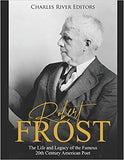Robert E. Lee's Greatest Victories: The Battles of Second Manassas, Fredericksburg, and Chancellorsville
ISBN: 9781984036308
$12.99
- Includes pictures of the battles' important generals and locations.
- Includes maps of the battles.
- Includes accounts of the fighting written by important generals like Lee, Longstreet, Stonewall Jackson, and more.
- Includes a Bibliography of each battle for further reading.
- Includes a Table of Contents.
With the exception of George Washington, perhaps the most famous general in American history is Robert E. Lee (January 19, 1807 - October 12, 1870), despite the fact he led the Confederate Army of Northern Virginia against the Union in the Civil War. Lee is remembered today for constantly defeating the Union's Army of the Potomac in the Eastern theater from 1862-1865, considerably frustrating Lincoln and his generals. His leadership of his army led to him being deified after the war by some of his former subordinates, especially Virginians, and he came to personify the Lost Cause's ideal Southern soldier. His reputation was secured in the decades after the war as a general who brilliantly led his men to amazing victories against all odds.
Among those victories, the three most decisive and stunning victories were Second Manassas (August 1862), Fredericksburg (December 1862) and Chancellorsville (May 1863).
The Second Battle of Bull Run (August 28-30, 1862) was one of the most decisive battles fought during the Civil War, and it was also one of the most unlikely. Less than three months before the battle, Joseph E. Johnston's Army of Northern Virginia had been pushed back nearly all the way to Richmond by George B. McClellan's Army of the Potomac, so close that Union soldiers could see the church steeples of the Confederate capital. And yet, at the end of Second Manassas, Robert E. Lee's Army of Northern Virginia found itself in the field unopposed about 20 miles away from the Union capital of Washington D.C.
Among those victories, the three most decisive and stunning victories were Second Manassas (August 1862), Fredericksburg (December 1862) and Chancellorsville (May 1863).
The Second Battle of Bull Run (August 28-30, 1862) was one of the most decisive battles fought during the Civil War, and it was also one of the most unlikely. Less than three months before the battle, Joseph E. Johnston's Army of Northern Virginia had been pushed back nearly all the way to Richmond by George B. McClellan's Army of the Potomac, so close that Union soldiers could see the church steeples of the Confederate capital. And yet, at the end of Second Manassas, Robert E. Lee's Army of Northern Virginia found itself in the field unopposed about 20 miles away from the Union capital of Washington D.C.




